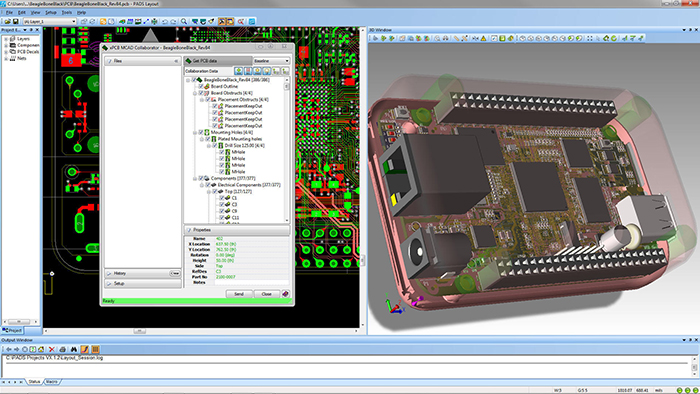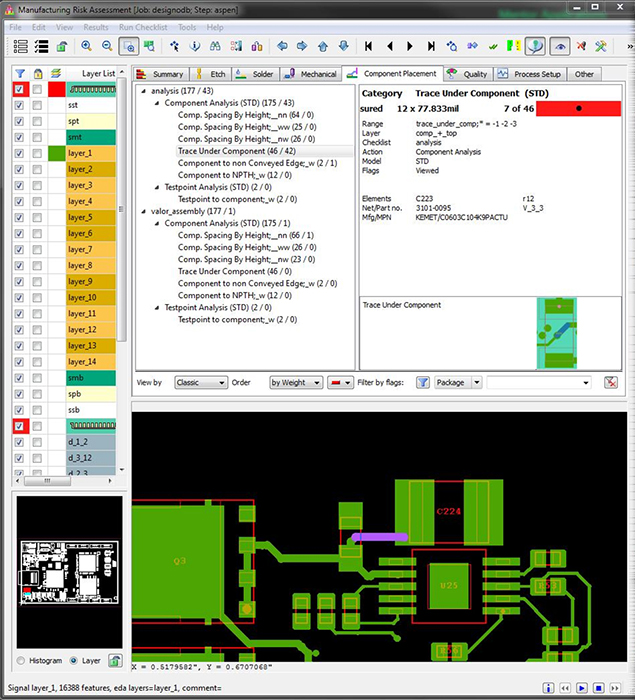
When engaging an EMS, use DfM analysis early and often.
For various reasons, at some point many companies which had previously manufactured PCBs in-house need to outsource PCB production to outside vendors.
Using a contractor to assist with a PCB design project can have its complications. If you haven’t used the contractor before, it can be difficult to trust that someone outside your company will provide the same level of results you would develop in-house, and communication is often complicated. The reality, however, is it is sometimes necessary, or even preferred, to use the services of outsourced contractors.
Work as a team. For the best outcome, it’s important to include contractors as part of the team. Include your contractors right from the start in planning, testing and practically everything you do. As trusted partners, your contractors will provide quality results, and you will develop a relationship in which you share a common language, making it easier to ramp up future projects.

Figure 1. 3D electrical/mechanical collaboration tools let mechanical and electrical designers communicate efficiently, and potentially eliminate manufacturing problems.
Communicate with your contractor throughout the PCB design process. A good design review system typically provides review, markup, and reporting capabilities, allowing you to search and annotate design data for greater collaboration and efficiency throughout the design flow.
Perhaps one of the most important items to work out with the contract manufacturer is the preferred file format for transferring the design data to them. Although Gerber is more or less universally acceptable, one of the modern “intelligent” formats usually speeds up the process and tends to be more error-free.
If your contractor also provides mechanical (MCAD) services, implementing an efficient ECAD-MCAD collaboration system will help both you and the mechanical engineer stay in your respective system’s comfort zone, making collaboration effective and convenient.
Use simulation throughout the design. Design for manufacturing can be a powerful tool for improving product quality. Using the parameters that your outside manufacturer can supply, DfM checks (FIGURE 2) help ensure board manufacturability and maximize quality and yield.

Figure 2. DfM checks can identify problems that can affect the manufacturability of a PCB. Running checks during the design can often save a re-spin and a lot of time.
Since DfM is relatively quick and easy to run, run a DfM analysis after every change made to the design. Most users run DfM checks several times during a design.
This, along with DfT (design for test), will help achieve the maximum levels of quality and reliability in a design. And it’s not just about running the tests; it’s about really analyzing the results to understand each defect and its source. Focus less on the immediate solution and more on the research and conclusions you make. Not only will you improve your current design, you’ll improve all future designs.
Revise procedures to cure future failures. When problems arise that require design changes to meet the manufacturer’s requirements, it’s important to incorporate those into a design standard when using that manufacturer. Defining constraints and using design rules to ensure the manufacturer’s requirements are met will save a lot of time on future designs.
Although it is difficult to do when schedules are tight and multiple projects are on your desk, data mining is an important key to improving PCB design quality and reliability. If you take the time and effort to analyze results from simulations and real-life failures of your products in the field, you can establish working methods and guidelines that will prevent these failures from occurring in the future.
Throughout the PCB design cycle, multiple methods are used to detect and correct issues in your design, from signal integrity and analog simulation during schematic, to layout, thermal and power integrity analysis, verification, and of course, DfT audit and DfM analysis prior to fabrication. Each pass generates a lot of information that could be great for future use as well.
When investigating failure cause(s), take into account as many details as possible, including the materials used and how they behave under different circumstances. This is the only way to truly determine whether what you’re doing is right or wrong. Build an educational path within your organization, and perform data mining on the information you have, and the quality and stability of your designs will increase.
Working with outside contractors for the first time can be a difficult experience. Treating them as members of your team, paying attention to the manufacturer’s constraints, and incorporating those requirements into your designs all save time and effort. The bottom line: be sure there’s good cooperation with all the people invested in the process, take your manufacturer’s constraints into consideration during the design stage, check for failure as much as possible, and always try to learn from your mistakes.
Danit Atar is a product marketing specialist at Mentor Graphics (mentor.com); This email address is being protected from spambots. You need JavaScript enabled to view it..
















